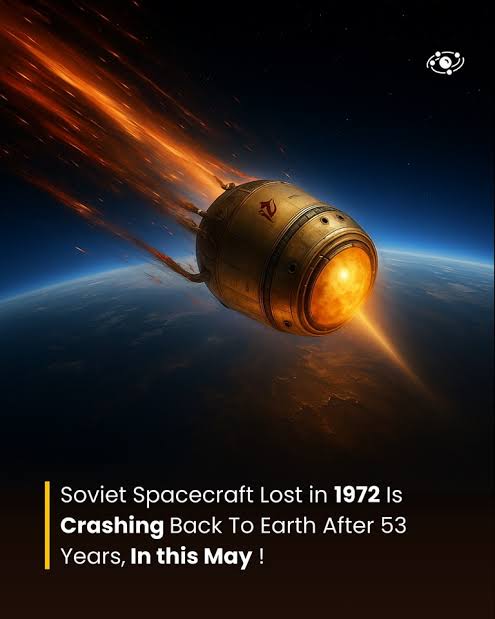
Follow WOWNEWS 24x7 on:
Updated: May 11, 2025 21:30

A relic of the original space race, the Soviet spacecraft Kosmos 482, at last crashed back into Earth's atmosphere after being in orbit for over half a century. The probe, which had initially been launched in 1972 to go to Venus, made an uncontrolled return to Earth early Saturday morning, landing in the Indian Ocean off Jakarta, Indonesia. Space agencies and experts are now advising the public: if you find any pieces, "don't mess with it."
Key Points:
Historic Return: Kosmos 482, stuck in Earth's orbit since a Venus mission went wrong in 1972, entered the atmosphere on May 10, 2025, at approximately 2:24 a.m. ET (9:24 a.m. Moscow time), said Roscosmos and the European Space Agency.
Uncontrolled Descent: The return of the spacecraft was unanticipated based on its inability to navigate and years of orbital decay, with scientists unable to determine the time or place until after the fact.
Crash Site: The probe is thought to have crashed in the Indian Ocean off the coast of Jakarta. There has been no damage or injuries reported, and it is unclear if debris survived the descent.
Survivability Concerns: Unlike most space junk, Kosmos 482 was designed to withstand Venus’s harsh atmosphere, making it more likely that some parts could survive reentry and reach the surface.
Expert Warnings: Scientists stress the risk of handling space debris. The probe’s robust construction and potential for hazardous materials have prompted warnings: if found, do not touch or approach any suspicious objects.
International Monitoring: The phenomenon was monitored carefully by global space organizations, as it was a difficult one to forecast across massive swaths given the nature of atmospheric reentry.
Safety in Public Places: Although chances for individuals to get hurt are low-statistically well below a hit by lightning-authorities nevertheless request caution and quick reporting to officials of suspected remnants.
Kosmos 482's dramatic homecoming brings a close to a 53-year episode in space history, a potent reminder of the capricious heritage of space exploration's formative years.
Source: CNN

